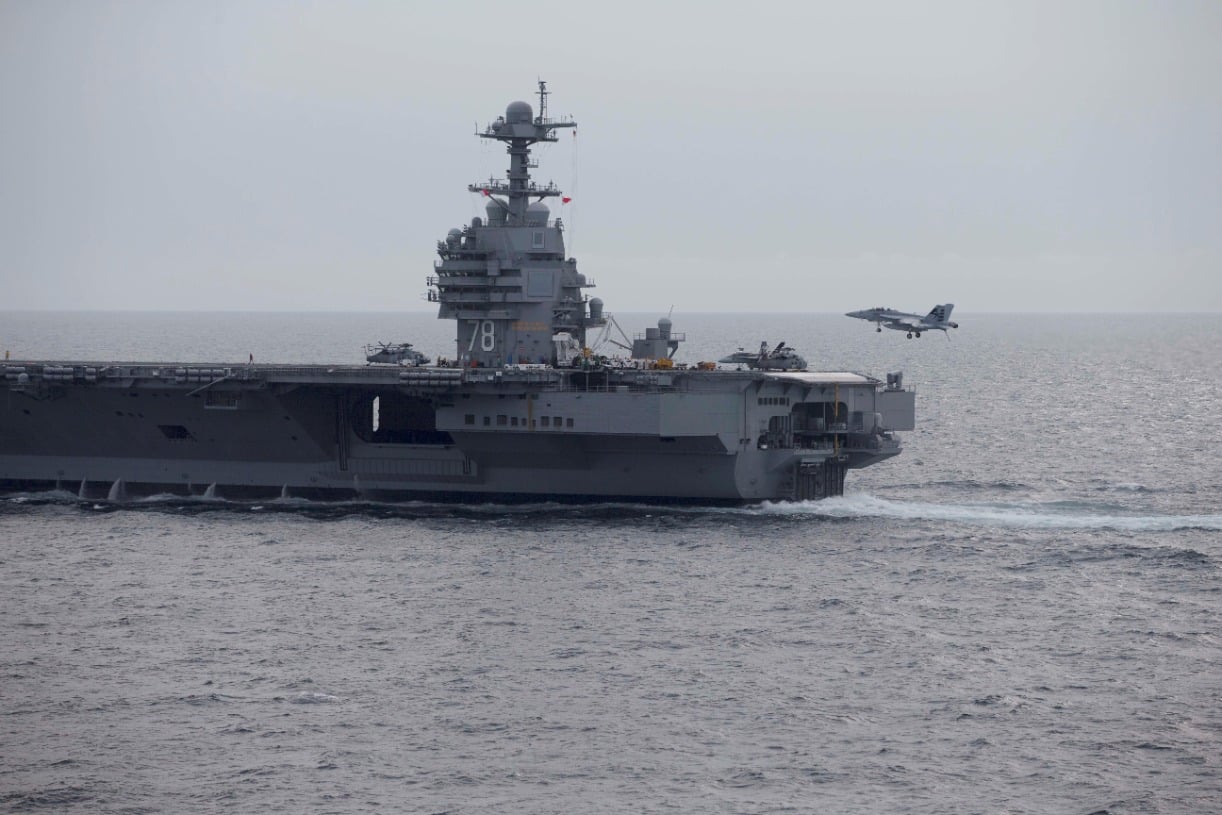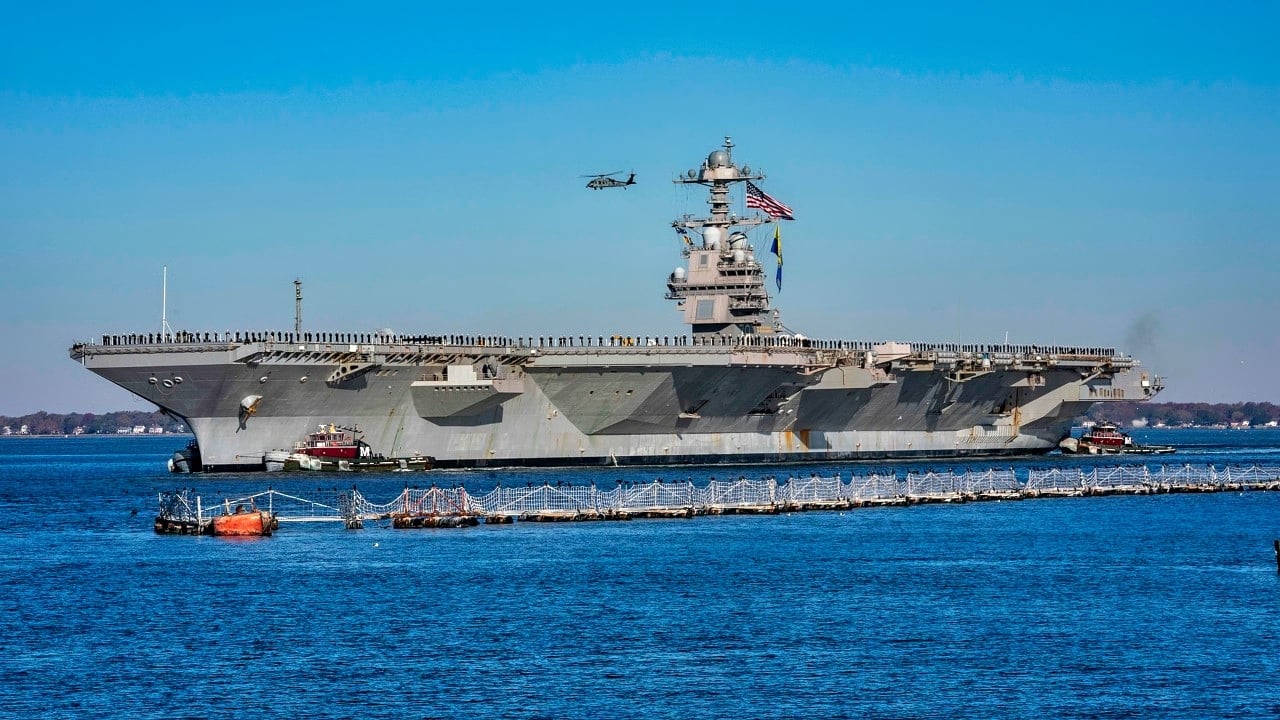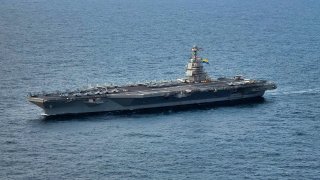The Ford-Class Aircraft Carrier Has a New Enemy (Not Russia)
The U.S. Navy's Gerald R. Ford (CVN-78) aircraft carrier made its combat debut last fall in the eastern Mediterranean, launching over 8,000 sorties. This deployment showcased the carrier's capabilities but sparked debate over its $13 billion price tag and vulnerability to modern threats like hypersonic missiles from China and Russia.
Summary and Key Points: The U.S. Navy's Gerald R. Ford (CVN-78) aircraft carrier made its combat debut last fall in the eastern Mediterranean, launching over 8,000 sorties. This deployment showcased the carrier's capabilities but sparked debate over its $13 billion price tag and vulnerability to modern threats like hypersonic missiles from China and Russia.

-The Ford-class carriers, developed to replace the Enterprise and Nimitz classes, boast advanced technologies such as the Electromagnetic Aircraft Launch System (EMALs) and Advanced Arresting Gear (AAG), enabling 25% more sorties and reduced maintenance.
-Despite the high costs, proponents argue the Ford-class carriers are essential for maintaining U.S. naval dominance amid rising global tensions.
The Ford-Class Has a Cost Problem It Won't Easily Solve
The U.S. Navy’s newest aircraft carrier made its first combat debut last fall, when the cutting-edge ship was suddenly deployed to the eastern Mediterranean as part of a U.S. show of force following Hamas’s October 7 massacre against Israel.
Although the formidable vessel did not intercept missiles or unmanned aerial vehicles (UAVs) while in the Red Sea, the Gerald R. Ford (CVN-78) carrier did launch more than 8,000 sorties while underway.
Proponents of the new Ford-class have used this surprise extended deployment to validate the carriers’ significance to the fleet. In contrast, others have argued that the class’s hefty price tag and vulnerability to emerging threats showcase how the whole “supercarrier” concept is no longer sustainable.
An overview of the upcoming Ford-class
Under development to replace the Navy’s existing Enterprise and Nimitz nuclear-powered aircraft carriers, the Ford ships are intended to take over the role as the service’s premiere “floating airbases” once introduced. The Nimitz ships already possess a vast array of top-notch capabilities that make it the superior carrier across the globe. However, the Ford ships are even better. From larger flight decks and new propulsion plants to technologies advances and upgraded defenses, the Ford carriers truly represent the best of the best.
Perhaps the most critical improvement fitted on the Ford class carriers is the incorporation of an Electromagnetic Aircraft Launch System (EMALs) and an Advanced Arresting Gear (AAG). EMALs launches aircraft via a catapult which employs a linear induction motor unlike the conventional steam piston used by its predecessors. Combined with the AAG, the Ford ships are capable of launching 25% more sorties in addition to generating triple the amount of electrical power. According to Naval Technology, it is estimated that the upgraded technologies onboard the Ford ships will result in a 30% reduction in overall maintenance requirements.
Is the Ford class’s whopping price tag worth it?
All of the enhancements fitted on the Ford ships come with quite the hefty price tag. Each ship alone is estimated to cost $13 billion. The program’s total cost is upwards of $120 billion, making this carrier class the most expensive ever.
Some naysayers have argued that the U.S. should not be wasting any of its already stretched defense resources into producing new aircraft carriers, pointing to the development of advanced anti-ship missiles being developed by Russia and China. According to the carrier’s critics, the emergence of hypersonic weapons further threatens the survivability of aircraft carriers.

New lethal weapons like Beijing’s DF-21D and DF-26 anti-ship missiles certainly pose a threat to U.S. carriers. However, the Navy can’t just cut off its ability to launch fighters from the sea. Tensions between Washington and Beijing are only increasing and the potential for imminent kinetic conflict looms heavily.
For now, the service must prioritize the timely introduction of its arguably most essential asset at sea regardless of cost.

About the Author: Defense Expert Maya Carlin
Maya Carlin, National Security Writer with The National Interest, is an analyst with the Center for Security Policy and a former Anna Sobol Levy Fellow at IDC Herzliya in Israel. She has by-lines in many publications, including The National Interest, Jerusalem Post, and Times of Israel. You can follow her on Twitter: @MayaCarlin.


